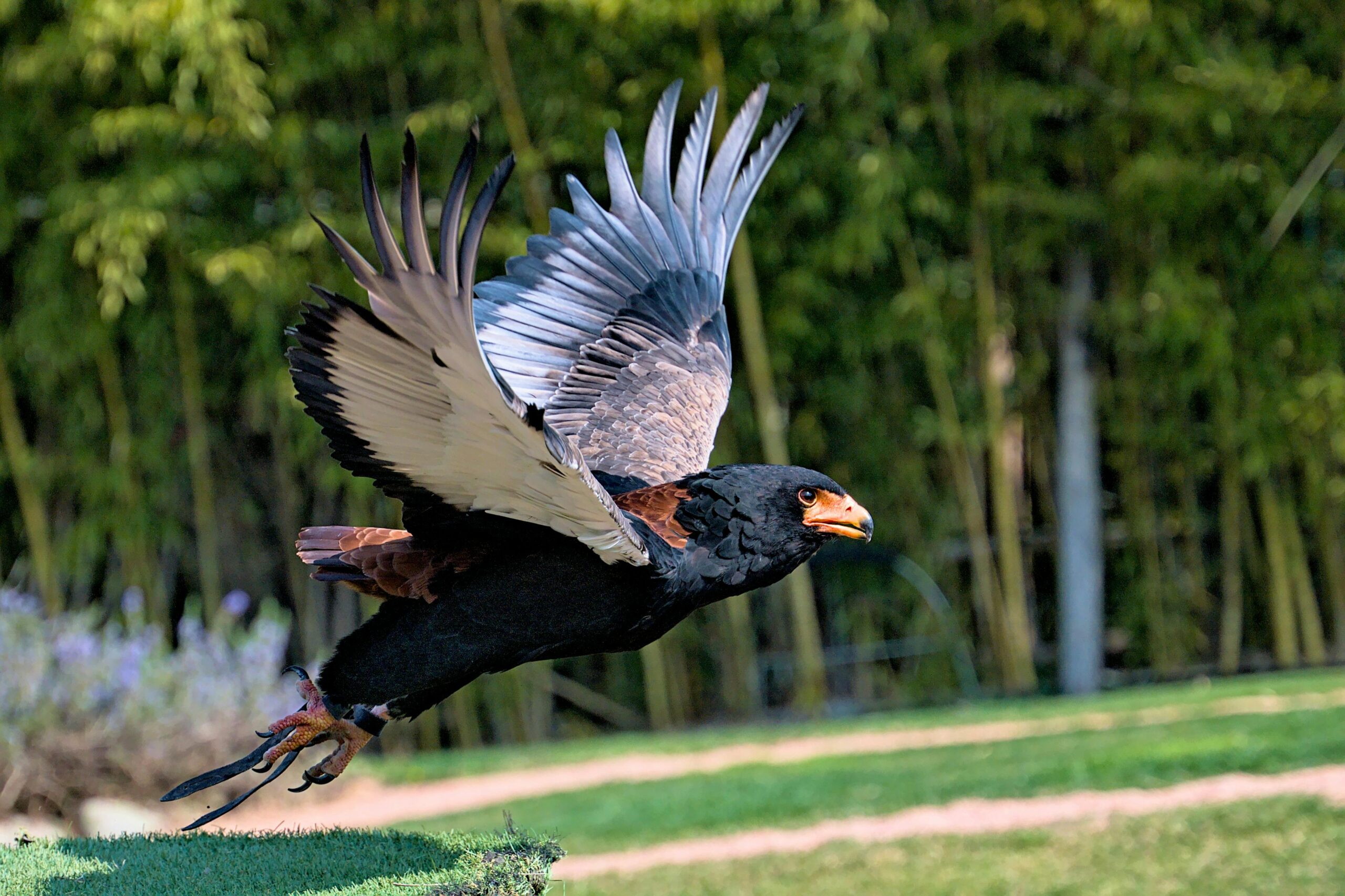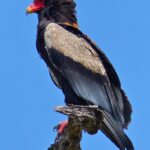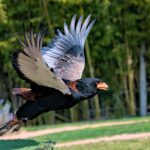The Bateleur Eagle (Terathopius ecaudatus) is a captivating bird of prey found in broad areas of Sub-Saharan Africa and parts of Arabia. Known for its striking black plumage, colorful accents, and distinctive bushy head, this highly aerial species spends much of its time soaring effortlessly through the skies. But how long do these magnificent raptors live?
Bateleur Eagle Lifespan: Approximately 27 Years in the Wild
The average lifespan of a Bateleur Eagle in the wild is approximately 27 years. This impressive longevity is a testament to their adaptability and resilience in their natural habitats. However, it’s important to note that various factors can influence the lifespan of individual Bateleur Eagles, including their environment, access to resources, and exposure to threats.
Breeding and Parental Care
Bateleur Eagles are known to be monogamous, mating for life. Their breeding seasons vary across their range, but they typically lay only one egg at a time. This strategy of producing a single chick per breeding cycle allows for greater survival rates, as the parents can focus their efforts on nurturing and protecting the offspring.
Both the male and female Bateleur Eagles invest heavily in parental care, ensuring the chick’s successful development and eventual independence. This strong parental bond and dedication to their young contribute to the overall longevity of the species.
Feeding Habits and Adaptations
As carnivores and scavengers, Bateleur Eagles feed on a variety of prey, including birds, their eggs, small reptiles, small mammals, and insects. Their ability to hunt doves, hornbills, kingfishers, and even termites, as well as their talent for detecting and arriving at fresh carcasses, demonstrates their adaptability and hunting prowess.
One unique behavior observed in Bateleur Eagles is their practice of sunbathing. They are known to spread their wings to expose their feathers to direct sunlight, warming the oils in their plumage to enhance their aerodynamics. This behavior, described as a “striking heraldic posture,” has earned them nicknames like the “Conifer eagle” or “Pine eagle” in some regions.
Threats and Conservation Efforts
Despite their impressive lifespan, Bateleur Eagle populations are currently threatened due to various factors, including poaching for international trade, poisoning, and habitat loss, particularly in countries like Namibia and South Africa. The global population of Bateleur Eagles is estimated to be between 10,000 and 100,000 individuals, with a decreasing trend according to the IUCN Red List.
To address these threats and ensure the long-term survival of the Bateleur Eagle, conservation efforts are crucial. These efforts may include:
- Strengthening anti-poaching measures and enforcement to combat illegal trade.
- Implementing sustainable land-use practices and habitat restoration initiatives to mitigate habitat loss.
- Educating local communities about the importance of Bateleur Eagles and their role in the ecosystem.
- Conducting research to better understand the species’ ecology and identify effective conservation strategies.
By working together to protect the Bateleur Eagle and its habitat, we can help ensure that these majestic raptors continue to soar through the skies for generations to come.
Key Facts about Bateleur Eagle Lifespan
| Fact | Value |
|---|---|
| Average Lifespan in the Wild | Approximately 27 years |
| Breeding Behavior | Monogamous, mating for life |
| Clutch Size | 1 egg per breeding cycle |
| Parental Care | Shared between male and female |
| Primary Food Sources | Birds, small reptiles, small mammals, insects |
| Unique Behavior | Sunbathing to enhance aerodynamics |
| Global Population Trend | Decreasing |
| Conservation Status | Endangered/Vulnerable in some regions |



